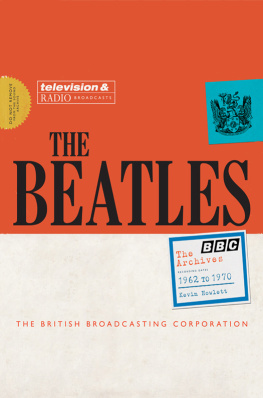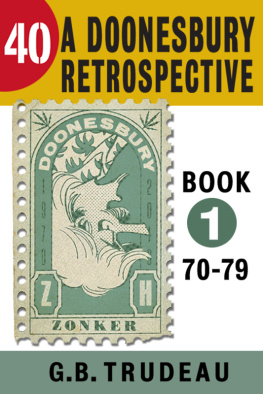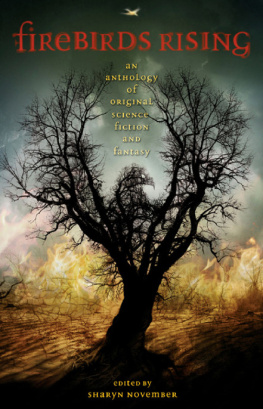Jeff Tann - Camaro & Firebird Performance Projects: 1970-81
Here you can read online Jeff Tann - Camaro & Firebird Performance Projects: 1970-81 full text of the book (entire story) in english for free. Download pdf and epub, get meaning, cover and reviews about this ebook. year: 2013, publisher: S-A Design, genre: Romance novel. Description of the work, (preface) as well as reviews are available. Best literature library LitArk.com created for fans of good reading and offers a wide selection of genres:
Romance novel
Science fiction
Adventure
Detective
Science
History
Home and family
Prose
Art
Politics
Computer
Non-fiction
Religion
Business
Children
Humor
Choose a favorite category and find really read worthwhile books. Enjoy immersion in the world of imagination, feel the emotions of the characters or learn something new for yourself, make an fascinating discovery.

- Book:Camaro & Firebird Performance Projects: 1970-81
- Author:
- Publisher:S-A Design
- Genre:
- Year:2013
- Rating:4 / 5
- Favourites:Add to favourites
- Your mark:
- 80
- 1
- 2
- 3
- 4
- 5
Camaro & Firebird Performance Projects: 1970-81: summary, description and annotation
We offer to read an annotation, description, summary or preface (depends on what the author of the book "Camaro & Firebird Performance Projects: 1970-81" wrote himself). If you haven't found the necessary information about the book — write in the comments, we will try to find it.
Jeff Tann: author's other books
Who wrote Camaro & Firebird Performance Projects: 1970-81? Find out the surname, the name of the author of the book and a list of all author's works by series.
Camaro & Firebird Performance Projects: 1970-81 — read online for free the complete book (whole text) full work
Below is the text of the book, divided by pages. System saving the place of the last page read, allows you to conveniently read the book "Camaro & Firebird Performance Projects: 1970-81" online for free, without having to search again every time where you left off. Put a bookmark, and you can go to the page where you finished reading at any time.
Font size:
Interval:
Bookmark:
Some great cars were built in the 1960s, starting with the full-size sedans that were competing in the Super Stock wars. When General Motors backed out of racing, Pontiac decided to build a street-performance car called the GTO, and before long all of the car manufacturers were building hot street drivers. With the introduction of the hot Camaros and Firebirds, it was a great time for young car enthusiasts. But things started to change in 1967 when the Vietnam War was heating up and young guys were being drafted to serve in the Army. Many of the would-be performance car buyers were being shipped overseas, so the sales of the performance cars started to go down.
The government introduced the Environmental Protection Agency (EPA) in 1970, and from an automotive standpoint, things started on a downhill slide. It took another 10 years for car manufacturers to come up with some solutions for the problems they faced but thanks to computer technology and fuel injection they did make a turnaround in the 1980s.
The 1970s were filled with cars trying to meet the emissions and gas mileage standards, but there were a few bright spots, such as the Camaro, the Firebird, and the Corvette. There were a few nice cars in the early 1970s but that started to really change by 1974. When you look at performance car production, the sales numbers in the early 1970s were low, and that was due to the fact that so many young guys were still in the service.
Chevrolet and Pontiac went in two different directions in the early 1970s. Chevrolet backed away from performance and even discontinued the Z28 Camaro. Chevrolet was adding luxury items to the Camaro to entice older buyers. Pontiac doubled down on the Firebird, especially the Trans Am, and when many fellows were getting out of the Army, Trans Am sales started increasing. Pontiac managed to keep installing big-block engines into the Trans Am Firebirds, along with luxury items, until 1979. Even though they werent as fast as the early cars they still offered decent acceleration, good gas mileage, and excellent handling.
In 1980, Pontiac came out with a new small-block engine with a turbocharger, and it produced the same power as the discontinued 400 and 403 big-displacement engines. The turbocharged engine had plenty of potential but it was dropped after 1981. The management at Chevrolet saw the success Pontiac was having with the Trans Am, so in response it reintroduced the Z28 in 1977.
Today the 19671969 Camaros and Firebirds are difficult to find, and when you do, they are either in extremely poor condition or they have already been restored and are selling for a high price. If you are looking for a performance car to build I recommend looking for a 1970-and-newer Camaro or Firebird. I have built both and have found the newer cars to be much better than the early models in construction, handling, and even styling. The 1970-and-newer Camaros and Firebirds are lower, longer, and sleeker than the previous models, and I think they look better than the Camaros and Firebirds that followed in the 1980s and 1990s.
If you are looking for a 1970s Camaro or Firebird they are getting more difficult to find because they are more than 30 years old, but you can find them if you really look hard. Sometimes, you can drive around your own neighborhood and find them sitting in a driveway or parked on the street, and often the car hasnt been moved in years. I have seen five in my town that could possibly be for sale.
Another way to find the potential car of your dreams is to look on the Internet. I once found a 1978 Special Edition Trans Am on Craigslist, so I recommend checking that website in your area for a restorable Camaro or Firebird. Another possibility is eBay Motors because I have seen some nice Camaros and Firebirds selling there. You can bid, or sometimes the owner has a buy now price. There are other sites, such as autotrader.com and goodguys.com, where you might be able to purchase a nice second-generation car.
You can also get the word out that you are looking for a certain kind of car, and there is always the chance that one of your friends knows of a car or locates one for you. You can always purchase a finished car, but if you want to completely rebuild a car to your own specificationsrestored, resto mod, or Pro Touringyou really want a car that needs everything, and that means you can probably buy it for a reasonable price. If you plan on changing the engine and transmission you might be able to find a rolling chassis for an even lower price.
Before you start your project, check out the environmental laws in your state. Knowing those requirements, you can determine what kind of modifications can be made legally and design your car around those laws. In many states, pre-1981 cars are exempt, but in others, such as California, only pre-1975 cars are exempt.
Ive covered everything from mild performance improvements to some wild ones. I have covered engine upgrades, transmission choices, suspension upgrades, and many other topics you should think about. I hope you find it helpful in selecting the kind of modifications you want to perform.
Good luck with your project car.
Selecting the right project car is critical. If you already own one and it has a solid body, frame, and suspension system, you wont have to look at online listings, the local newspaper, or automotive sales magazines, and such. On the other hand, if you need to buy the car youre going to build up you have to decide which one you really want and then start looking for it.
When I am looking for a particular car I contact all of my automotive enthusiast friends and start spreading the word. I also spend time online on eBay and Craigslist to see if what I am looking for is available. I generally have more luck with my friends telling me about cars that I might be interested in. Recently one of the cars I purchased was advertised briefly on Craigslist and the other was purchased from a friend. The old 19701981 Camaros and Firebirds are becoming more difficult to find, but they are out there and with a little searching they can still be found.
Few enthusiasts have the knowledge, tools, ability, and training to build a car without help from professionals. I have seen too many cars sitting in a persons driveway for decades. The car is going downhill every year, but when you talk to the owner, he tells you that he is going to fix up that car someday. The problem is someday never comes. The point is that a car is not going to fix itself, so you need to have mechanical and body-working talent or a fist full of money.
Before you start installing parts on your Camaro or Firebird, you should plan how you want the car to turn out. Professional shops generally commission an artists rendering for the builder to follow as the car is being assembled. If you are computer savvy you can take a picture of your car and start working up a computer picture of how you would like the car to look after it is finished. This can be done using photo manipulation programs such as Adobe Photoshop where you can install different wheels, alter the color, and make other changes.
I still prefer the old-fashioned way of hiring an artist such as Chip Foose, Thom Taylor, or Steve Stanford to design the cars because they work with your ideas and add some of their own. These artists are very well known and have worked with many of the best shops in the country, but you pay a good price for their expertise.
An artists rendering is generally used when the car is going to be changed radically from the factory design. It is not necessary when you are building a mildly modified car, such as a street machine or restomod without a lot of body changes. Remember that a mild upgrade, such as a restoration or resto-mod, costs less than a wild, no-expenses-spared, Pro Touring car because you do not have exotic body changes, high-end aftermarket engines, or related parts. Some of the cars Ive seen currently competing for event honors, such as the Goodguys Street Machine of The Year, are getting away from what a clean muscle car should look like because they are too busy. Others look nice, so it is just a matter of how far you want to go. What makes a second-generation Camaro or Firebird look nice is the cleanliness of the design. They dont require body changes for improvement.
Font size:
Interval:
Bookmark:
Similar books «Camaro & Firebird Performance Projects: 1970-81»
Look at similar books to Camaro & Firebird Performance Projects: 1970-81. We have selected literature similar in name and meaning in the hope of providing readers with more options to find new, interesting, not yet read works.
Discussion, reviews of the book Camaro & Firebird Performance Projects: 1970-81 and just readers' own opinions. Leave your comments, write what you think about the work, its meaning or the main characters. Specify what exactly you liked and what you didn't like, and why you think so.





